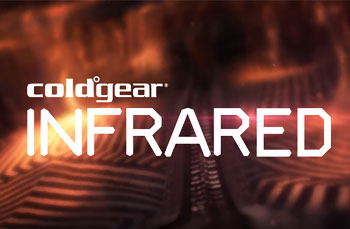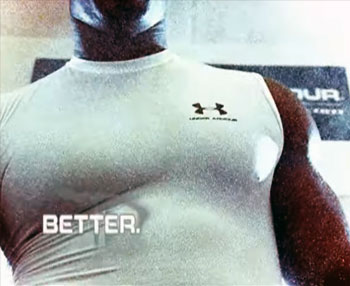Under Armour offers two popular lines of performance apparel designed for different temperature ranges – ColdGear and HeatGear. But with overlapping temperature specifications, it can get confusing to choose which gear is right for your needs.
This comprehensive guide compares ColdGear and HeatGear across various factors like construction, design, temperature rating, and performance to help you make an informed decision.
A Brief Comparison Table
| Factor | ColdGear | HeatGear |
| Construction | Double-sided fabric, smooth interior & brushed exterior | Single-layer smooth fabric |
| Design | Tighter fit, traps body heat | Looser fit, promotes air flow |
| Temperature Rating | Ideal for 45-35°F | Ideal for 80-55°F |
| Moisture Management | Dries 4x faster than regular fabric | Ultra-breathable, fast drying |
| Wind Resistance | High, blocks wind chill | Moderate, some designs more wind-resistant |
| Warmth | Warmer, retains body heat | Cooler, releases body heat |
| Breathability | Moderate, balances warmth & breathability | Excellent, prioritizes ventilation |
| Weather | Colder & dry weather | Warmer & humid weather |
| Activities | Cold weather training & sports | Hot weather training & sports |
| Layering | Base or mid layer | Base layer |
Overview of Under Armour ColdGear
Under Armour ColdGear is designed with a dual-layer construction featuring a smooth interior lining and a brushed, thermal exterior that traps body heat. The fabric composition and snug fit work together to retain warmth around your core.

Here are some key features of ColdGear:
- Dual-layer fabric – Inner layer manages moisture while exterior retains warmth
- Smooth inner lining – Slicks away sweat from skin for quicker evaporation
- Brushed outer layer – Insulates body heat and dries fast
- Athletic fit – Snug shape mirrors natural contours to trap warmth
- Moisture Transport System – Wicks perspiration away from skin
- Anti-odor technology – Prevents growth of odor-causing microbes
- 4-way stretch – Allows full mobility and stretch in every direction
- UPF 30+ sun protection – Guards against harmful UV rays
- Variety of tops & bottoms – Base layers, mock necks, leggings and more
ColdGear is engineered to maintain warmth, keep you dry, and protect against the elements – perfect for training and playing sports outdoors in cold weather.
Overview of Under Armour HeatGear
In contrast to ColdGear, HeatGear features a smooth, single-layer construction designed to enhance breathability and moisture management. The looser fit and lightweight material help release excess body heat.
Here are some notable features of HeatGear:
- Lightweight smooth fabric – Promotes maximum airflow and ventilation
- Loose compression fit – Reduces overheating and allows air circulation
- Moisture Transport System – Wicks sweat away from skin quickly
- Anti-odor technology – Prevents growth of odor-causing microbes
- 4-way stretch – Unrestricted mobility in every direction
- UPF 30+ sun protection – Guards against harmful UV rays
- Mesh panels – Strategically placed for extra ventilation
- Variety of tops & bottoms – Base layers, tees, tanks, leggings and more
The ultra-breathable construction of HeatGear allows it to keep you cool, dry, and comfortable even during intense training in hot weather conditions.
Also Read: Is TLF Apparel Better Than Gymshark?
Key Differences Between ColdGear and HeatGear
While both product lines share Under Armour technologies like moisture management and stretch fabric, they differ significantly when it comes to temperature regulation:
1. Fit

ColdGear and HeatGear are designed with different fits to suit varying weather conditions. ColdGear features an athletic compression fit, snug against the body to retain warmth, ideal for chilly conditions.
This close fit acts like a second skin, keeping the body’s natural heat in, and the cold out. HeatGear, on the other hand, has a looser fit to encourage air circulation. This is important in warmer climates where cooling down is essential to remain comfortable.
2. Fabric
Fabric technology is integral to the function of both gear types. ColdGear employs a dual-layer brushed fabric.
This means that it has two layers, with the inner layer designed to retain body heat and the outer layer working to protect against the cold.
The brushed texture adds an extra layer of insulation. In contrast, HeatGear uses a smooth, single-layer fabric that enhances breathability, keeping users cool by allowing heat to escape and fresh air to circulate.
3. Ventilation
Ventilation is crucial for temperature regulation. ColdGear, with its tight construction, restricts airflow to maintain warmth. It’s like bundling up in a cozy blanket on a cold day.
HeatGear uses mesh panels to increase airflow, a feature much needed in warm weather. These panels act like little windows, letting the breeze in and keeping the body cool.
4. Weather
ColdGear and HeatGear are optimized for opposite weather conditions. ColdGear is your go-to for colder, dry climates. Think of it as your winter coat, keeping you warm when the temperature drops.
HeatGear is the choice for warmer, humid conditions, acting like a light T-shirt on a hot summer day, helping your body stay cool and refreshed.
5. Layering
Layering is an effective method to manage body temperature. ColdGear is versatile as it can be used as a base or mid-layer, depending on the intensity of the cold. It’s like adding layers of clothing on a particularly cold day.
HeatGear is ideal as a lightweight base layer, ensuring you don’t feel weighed down in the heat. It’s akin to wearing a light tank top beneath your outfit on a sunny day.
6. Warmth
Warmth management is at the core of these gear lines. ColdGear acts like a thermal flask, keeping your body heat close and ensuring you stay warm in cold conditions.
HeatGear, alternatively, releases excess warmth, much like opening a window in a stuffy room to let out the heat and let in the cool breeze.
7. Breathability
Breathability is about balancing warmth and ventilation. While HeatGear prioritizes ventilation, ensuring you’re not overwhelmed by the heat, ColdGear leans more towards insulation. Imagine ColdGear as a warm, insulating wall, and HeatGear as a ventilated, airy space.
8. Activities
Different activities require different gear. ColdGear is designed for winter sports, like skiing or snowboarding, where staying warm is crucial. HeatGear is for summer sports, like running or basketball, where staying cool can enhance performance.
9. Wind Resistance
Wind resistance is an added benefit for outdoor activities. ColdGear offers higher wind resistance, acting like a shield against chilly winds. HeatGear, being more breathable and lightweight, doesn’t offer as much protection against the wind, focusing more on keeping you cool.
ColdGear traps heat while HeatGear releases it, making the products suited for opposite ends of the weather spectrum.
Also Watch This Video:
Pros and Cons of Under Armour ColdGear
Pros
- Excellent insulation retains body heat
- Dual-layer construction provides wind resistance
- Smooth inner lining wicks moisture away fast
- Brushed exterior layer dries quickly
- Compression fit mirrors body shape to trap warmth
- Unrestricted mobility with 4-way stretch
- Guards against UV rays with UPF 30+ protection
- Prevents odor buildup with anti-odor technology
- Variety of tops and bottoms for layering
Cons
- Less breathable due to tighter fit and thicker fabric
- Can feel overly warm if worn in warmer weather
- Hand-wash and air dry only
- More expensive than HeatGear
- Limited bright color options
- Size runs small
Pros and Cons of Under Armour HeatGear
Pros
- Ultra-breathable single layer construction
- Loose fit enhances air circulation and cooling
- Mesh paneling provides targeted ventilation
- Wicks moisture fast to keep you dry
- Lightweight, comfortable feel
- Unrestricted mobility with 4-way stretch
- Guards against UV rays with UPF 30+ protection
- Fights odor buildup with anti-odor technology
- More affordable than ColdGear
- Vibrant color selections
- True to size fit
Cons
- Minimal insulation to trap warmth
- Mesh panels reduce wind resistance
- Smooth fabric retains some moisture
- Loose fit less ideal for layering
- Delicate material requires gentle wash
- Compresses over time with extended use
- Not ideal for cold weather sports
Also Read: Comparison Of Fabletics and Zyia
Frequently Asked Questions (FAQs)
Under Armour ColdGear is engineered for colder weather around 45-35°F with its dual-layer thermal construction that retains body heat.
While primarily designed for warmer climates, HeatGear can work as a base layer in cold weather when layered properly under warmer mid layers and outerwear.
Under Armour recommends ColdGear for temperatures ranging from 45-35°F. It maintains performance and comfort best within this cold weather range.
HeatGear is designed to keep you cool and dry in hotter temperatures from 80-55°F. Its ultra-breathable construction releases excess warmth and accelerates moisture wicking.
Final Thoughts
When choosing between Under Armour’s ColdGear and HeatGear, consider the temperature range you plan to use it in along with desired features like insulation versus ventilation.
ColdGear locks in warmth but compromises breathability, while HeatGear emphasizes airflow and cooling at the expense of warmth. Just match the gear’s strengths to your intended athletic activity and climate conditions to maximize performance and comfort.
With their advanced moisture wicking technologies and range of fits and styles, both product lines live up to Under Armour’s reputation for innovative athletic apparel.

